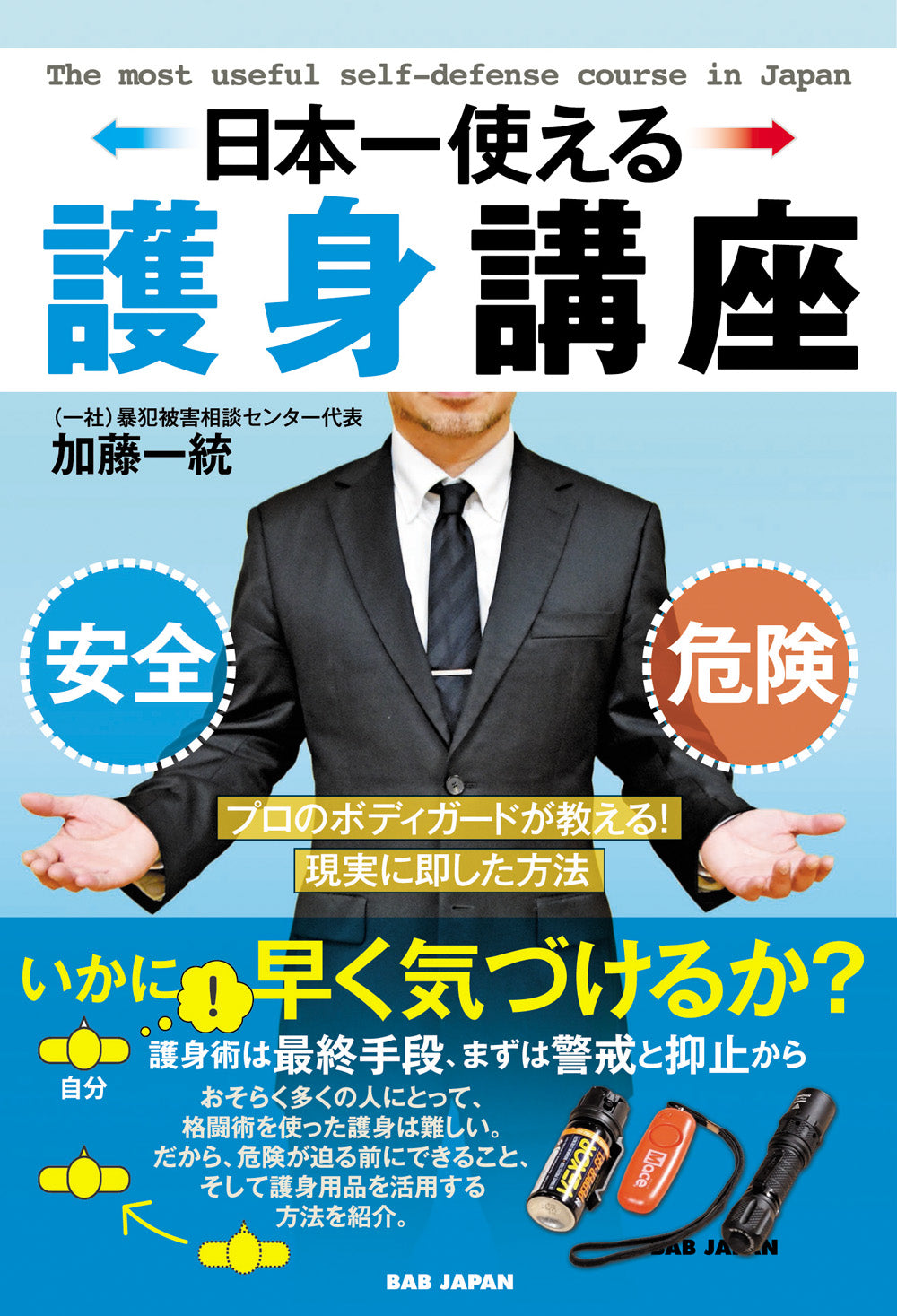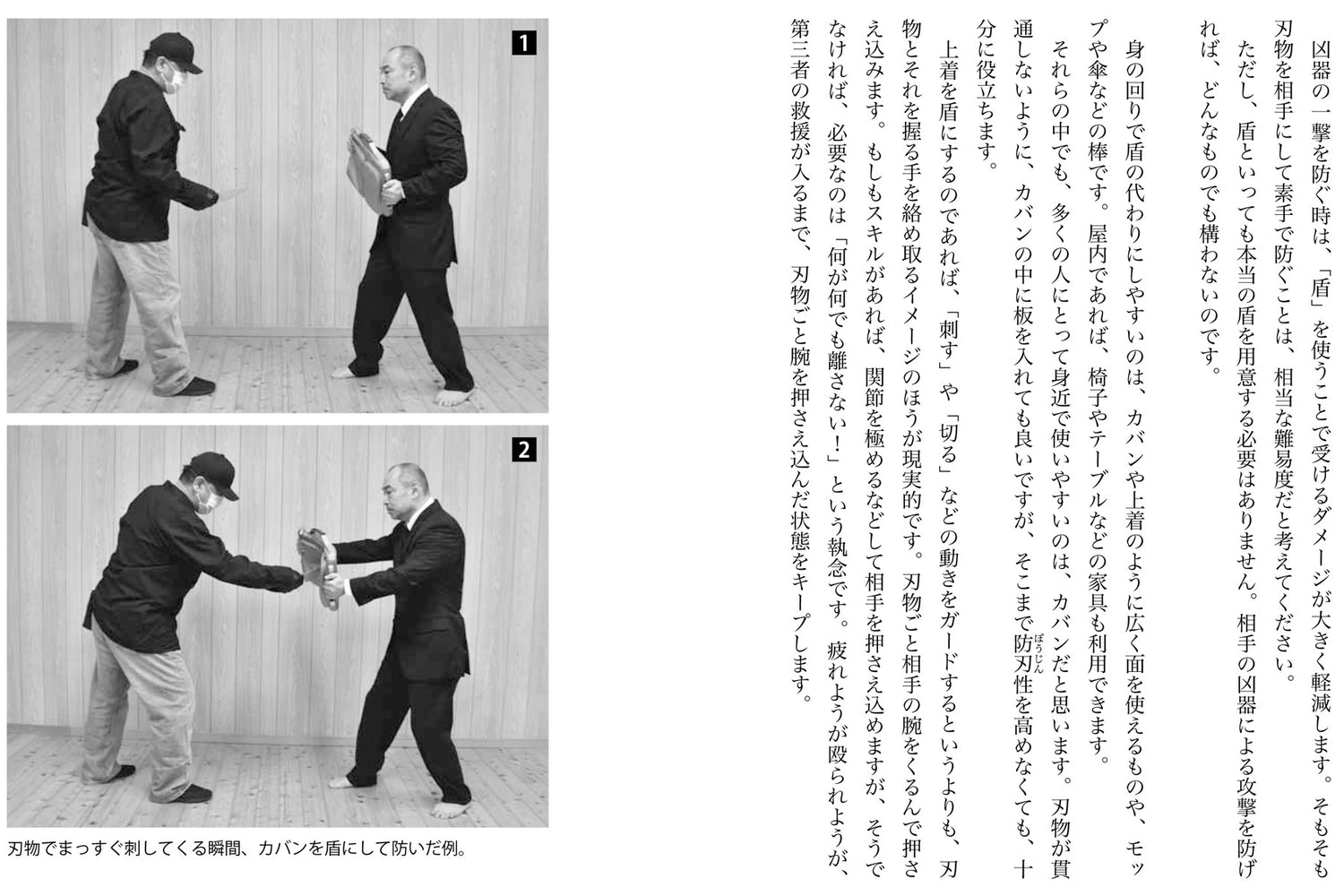The Most Useful Self Defense Course in Japan Book by Takanori Kato
THIS IS A SPECIAL ORDER ITEM
These items can take approximately 1-2 weeks to arrive here before they are ready to be shipped out by the selected courier service. Special order items are not eligible for return or exchange under any circumstances. Please review product details carefully before adding these items to your shopping cart.
Please Note: If you place an order for other items, they will be held and shipped together with the special order item when it is available. Alternatively you can place separate orders so your regular items will be shipped sooner.
A Professional Bodyguard’s Guide to Real-World Self-Defense
Practical wisdom for staying safe
How quickly can you sense danger?
Self-defense is the last resort. The first line is vigilance and deterrence.
For most, fighting off an attacker with martial arts is no easy feat. This book unveils what you can do before danger strikes and how to wield self-defense tools effectively.
Penned by a sought-after professional bodyguard, flooded with YouTube collaboration requests, this is their long-awaited debut work!
CONTENTS
Guidance: The Self-Defense We Need Today Safety and water are no longer free. Lessons learned as a bodyguard. The harsh reality where ideals fall short.
Lesson 1: The Keys to Successful Self-Defense Fleeing is fundamental.
- Condition 1: The ideal flow of self-defense
- Condition 2: The purpose of self-defense techniques
- Condition 3: The three bastions of protection Column: A Bodyguard’s True Tale, Episode 1 Protecting a corporate executive threatened by organized crime
Lesson 2: The First Bastion—Vigilance and Deterrence Self-defense is a contest of awareness. Smartphones and the risks they pose. Staying relaxed is the root of alertness. Switching vigilance on and off. The critical “5 meters, 5 seconds” divide. Breaking bad habits as the shortest path to safety. Don’t ignore unease. Keep your eyes and ears open. What triggers a sense of wrongness? Why do we dismiss it? Put unease into words. Craft your own alertness benchmark. Examples of verbalizing instincts. Shed assumptions. Master your gaze. Column: A Bodyguard’s True Tale, Episode 2 Facing a visitor armed with a handgun
Lesson 3: The Second Bastion—Distance, Time, Prediction, and Verification How far must you stay to make an attacker give up? Distance and time are your greatest weapons. Test what distance feels like. What you can do as an assailant closes in. Predict and confirm to avoid trouble. Most dangers lurk outdoors. Adjust alertness to your surroundings. Traits of risky places. Blind spots are everywhere. Staying vigilant in public. Self-defense demands ruthlessness. Guarding against attacks from behind. Preventing violence from acquaintances. Five traits of those prone to violence. Column: A Bodyguard’s True Tale, Episode 3 Confronting a harassing family on behalf of an ex-spouse
Lesson 4: The Third Bastion—Self-Defense Techniques Tools to compensate for size or strength. Common self-defense tools and their features:
- Tool 1: Pepper spray
- Tool 2: Personal alarm
- Tool 3: Flashlight
- Tool 4: Stun gun Facing fear and paralysis in a crisis. Two things to do, one to avoid. Column: A Bodyguard’s True Tale, Episode 4 Protecting a client who sought safety from themselves
Lesson 5: When You Have No Tools Adaptability saves lives. Use everyday objects as shields. A knife-wielder may switch hands if restrained. Keep blades away from vital areas. Turning objects into weapons: pens, keychains, sticks, and more. Column: A Bodyguard’s True Tale, Episode 5 The triumphs and sorrows of bodyguards who fulfilled their duty
Lesson 6: Mastering Professional Baton Techniques Rules for carrying a baton. Why militaries and police worldwide use them. Swinging a baton’s trajectory. Core body mechanics for baton use. Close-combat baton techniques. Basic baton defense methods. Column: A Bodyguard’s True Tale, Episode 6 A brazen daylight assault with a sashimi knife
Lesson 7: Protecting Your Home Use the three bastions to shield your home and family. Core principles of home security.
- Prevention 1: Don’t leak information
- Prevention 2: Make your home hard to approach
- Prevention 3: Avoid being a target
- Entry deterrence 1: Intruders wait for open doors
- Entry deterrence 2: Verify who’s at the door
- Entry deterrence 3: Hold out for 8.5 minutes until police arrive
- Entry deterrence 4: Security tools to buy time
- If they get in 1: Escape
- If they get in 2: Hide
- If they get in 3: Don’t resist
- If they get in 4: Fight Can a sasumata (two-pronged pole) secure your home?
Author: Takanori Kato Director of the Violence Victim Consultation Center. Since 1995, a 30-year veteran in private security, specializing in bodyguard services with over 1,000 assignments. Runs “Bodytan-Navi,” a free service connecting users to reputable bodyguard and detective agencies. Answers questions on corporate security and home safety. Operates “Taka Defense Design,” crafting self-defense and security products. Creator of DVDs: The Baton Technique Textbook and Adult Self-Defense Course.
Language: Japanese
Length: 252 pages
mbktu1
Couldn't load pickup availability




